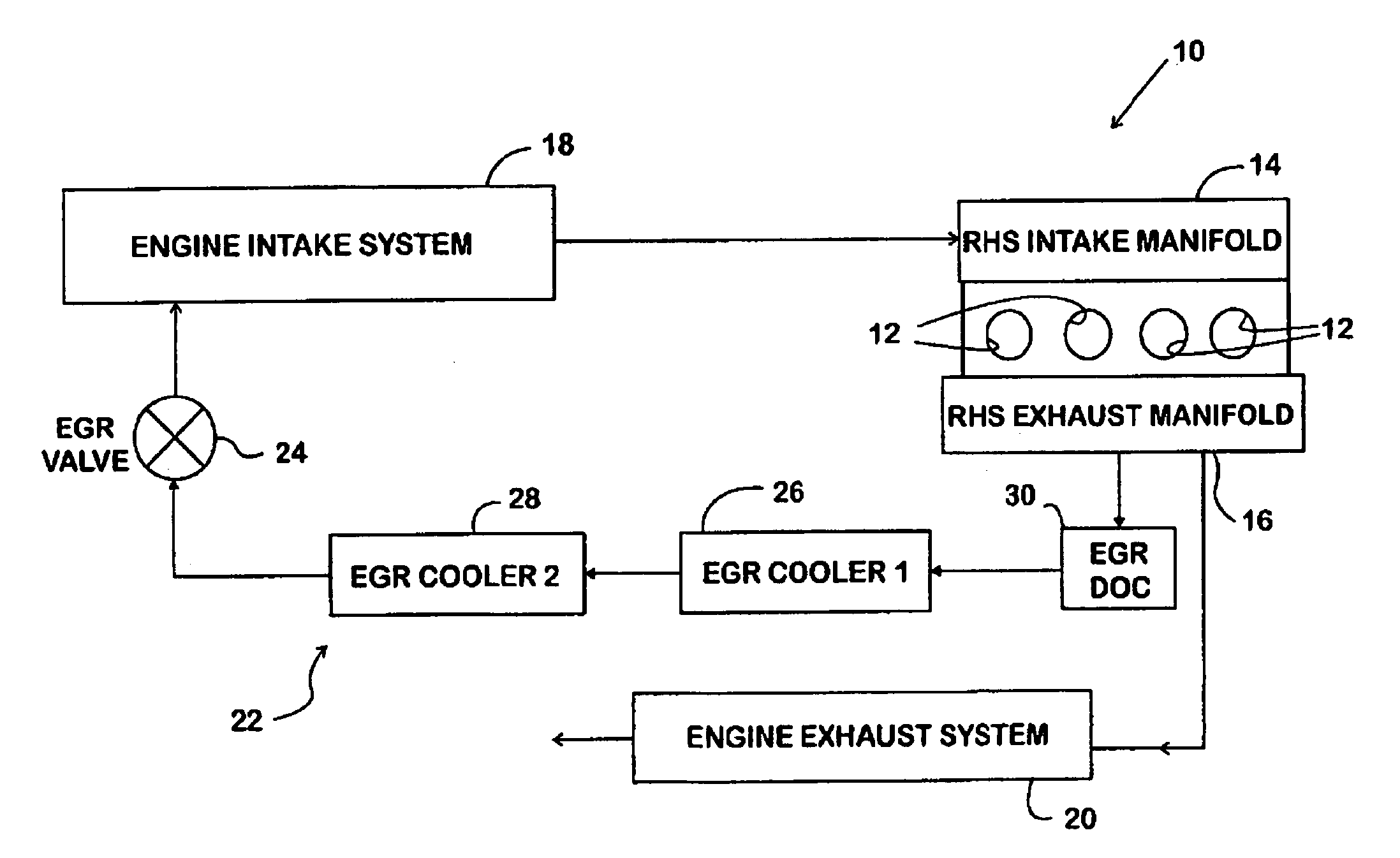EGR metallic high load diesel oxidation catalyst
a high-load, diesel technology, applied in the direction of machines/engines, mechanical equipment, non-fuel substance addition to fuel, etc., can solve the problems of affecting the cooling efficiency of the engine, the loss of needed cooling efficiency, and the impact of space constraints, so as to improve the operational efficiency, maintain efficiency, and high platinum group metals loading
- Summary
- Abstract
- Description
- Claims
- Application Information
AI Technical Summary
Benefits of technology
Problems solved by technology
Method used
Image
Examples
Embodiment Construction
[0021]FIG. 1 shows schematically a portion of an exemplary turbocharged diesel engine 10 for powering a motor vehicle. Engine 10 comprises cylinders 12 within which pistons (not shown) reciprocate. Each piston is coupled to a respective throw of a crankshaft by a corresponding connecting rod (also not shown). A V-shape engine has two banks of cylinders, but only the right hand side bank is shown in the drawing. Associated with the bank is an intake manifold 14 and an exhaust manifold 16.
[0022]Engine 10 comprises an intake system 18 and an exhaust system 20. Turbocharging is provided by a turbocharger (not shown) having one or more turbines in exhaust system 20 that operate one or more compressors in intake system 18.
[0023]Engine 10 further comprises an exhaust gas recirculation (EGR) loop 22 between exhaust system 20 and intake system 18. EGR loop 22 provides high-pressure EGR by having an inlet communicated directly to cylinder exhaust through exhaust manifold 16 and an outlet that...
PUM
 Login to View More
Login to View More Abstract
Description
Claims
Application Information
 Login to View More
Login to View More - R&D
- Intellectual Property
- Life Sciences
- Materials
- Tech Scout
- Unparalleled Data Quality
- Higher Quality Content
- 60% Fewer Hallucinations
Browse by: Latest US Patents, China's latest patents, Technical Efficacy Thesaurus, Application Domain, Technology Topic, Popular Technical Reports.
© 2025 PatSnap. All rights reserved.Legal|Privacy policy|Modern Slavery Act Transparency Statement|Sitemap|About US| Contact US: help@patsnap.com


